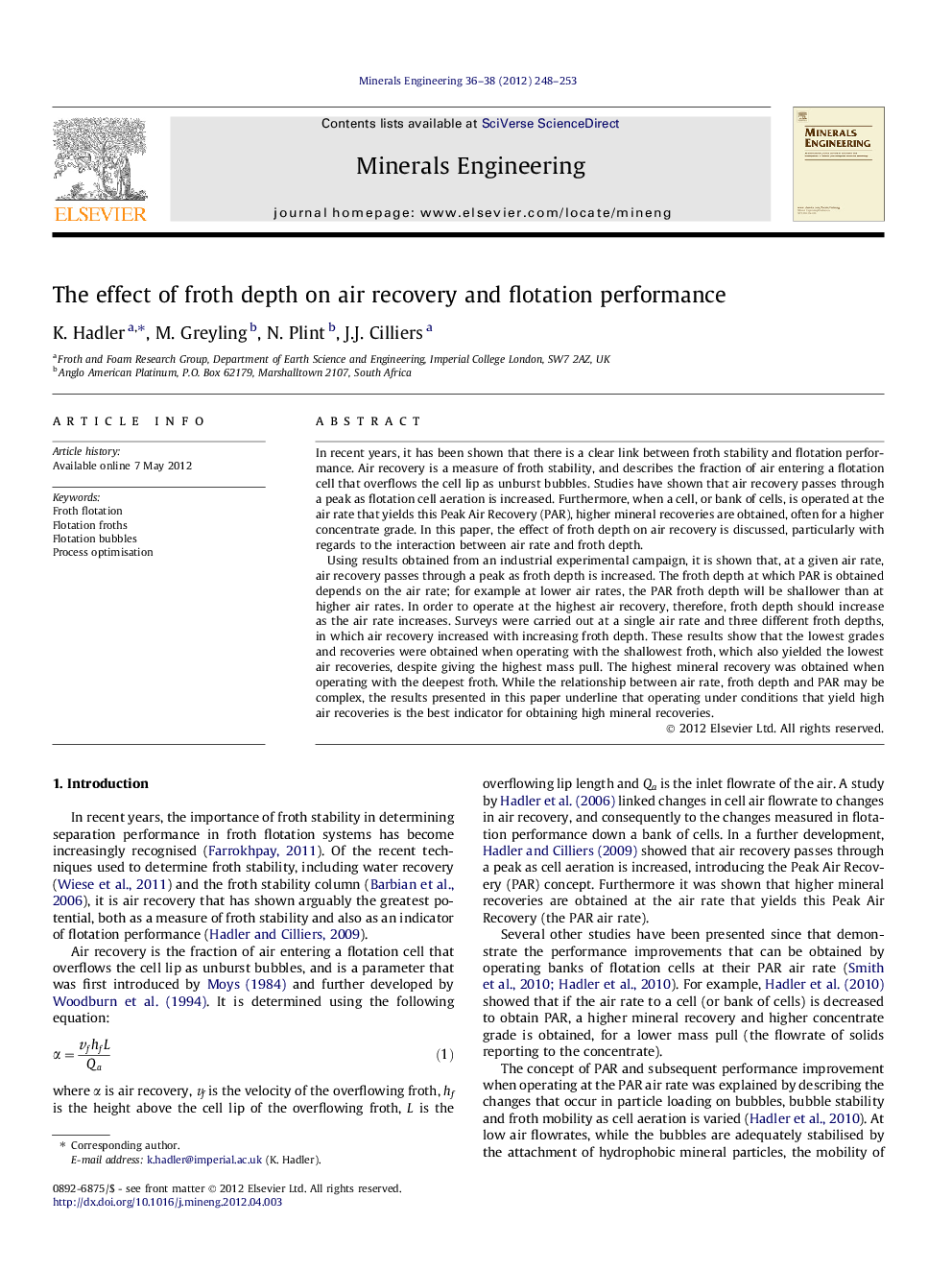| کد مقاله | کد نشریه | سال انتشار | مقاله انگلیسی | نسخه تمام متن |
|---|---|---|---|---|
| 233545 | 465350 | 2012 | 6 صفحه PDF | دانلود رایگان |

In recent years, it has been shown that there is a clear link between froth stability and flotation performance. Air recovery is a measure of froth stability, and describes the fraction of air entering a flotation cell that overflows the cell lip as unburst bubbles. Studies have shown that air recovery passes through a peak as flotation cell aeration is increased. Furthermore, when a cell, or bank of cells, is operated at the air rate that yields this Peak Air Recovery (PAR), higher mineral recoveries are obtained, often for a higher concentrate grade. In this paper, the effect of froth depth on air recovery is discussed, particularly with regards to the interaction between air rate and froth depth.Using results obtained from an industrial experimental campaign, it is shown that, at a given air rate, air recovery passes through a peak as froth depth is increased. The froth depth at which PAR is obtained depends on the air rate; for example at lower air rates, the PAR froth depth will be shallower than at higher air rates. In order to operate at the highest air recovery, therefore, froth depth should increase as the air rate increases. Surveys were carried out at a single air rate and three different froth depths, in which air recovery increased with increasing froth depth. These results show that the lowest grades and recoveries were obtained when operating with the shallowest froth, which also yielded the lowest air recoveries, despite giving the highest mass pull. The highest mineral recovery was obtained when operating with the deepest froth. While the relationship between air rate, froth depth and PAR may be complex, the results presented in this paper underline that operating under conditions that yield high air recoveries is the best indicator for obtaining high mineral recoveries.
Figure optionsDownload as PowerPoint slideHighlights
► Air recovery exhibits a peak as froth depth increases.
► The position of the Peak Air Recovery (PAR) depends on both air rate and froth depth.
► In order to operate at PAR, froth depth should increase as air rate increases.
► Low grades and recoveries but high mass pull were obtained when operating with a shallow froth depth and low air recovery.
► Operating at high air recoveries is the best indicator for obtaining high mineral recoveries.
Journal: Minerals Engineering - Volumes 36–38, October 2012, Pages 248–253